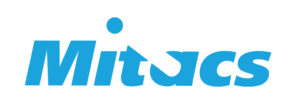Toolkit | Project
Utility Company 2016
Canadian Utility Company: Toolkit used to Evaluate Supplier Selection and Procurement
August, 2016
A set of overlapping factors, including technological innovation, climate change, and increasing reliability requirements, are contributing to fundamental changes in the traditional electric utility business model.1 Gone are the days of simply selling the flow of electrons as a commodity; public and regulatory demand for a more socially responsible, service-oriented model highlights the need for companies to pursue the integration of sustainability into their core business operations to address environmental, economic, and social responsibility challenges.2
Modern sustainability issues for local distribution companies (LDCs) include managing and reporting greenhouse gas emissions, maintaining reliable electricity supply for customers, fostering local community development and economic growth, and managing sustainability along their supply chains, both upstream and downstream of their core operations.3 While simultaneously addressing every issue at once is indeed a formidable task, the concept of continual improvement entails an incremental and collaborative process whereby beneficial actions are repeated, detrimental actions are discarded, and information is shared so that companies can learn from their peers’ successes and failures.
One Canadian utility company, aiming to incorporate sustainability within its core business model, recently utilized Tavares Group Consulting’s Sustainability Toolkit to develop a gap analysis for its supplier selection and procurement practices. By applying the Toolkit’s Plan-Do-Check-Act (PDCA) approach to the metric of supplier engagement, the company was able to systematically benchmark its engagement and procurement strategies against other LDCs and industry leaders in order to develop a comprehensive Action Plan that will inform its sustainable procurement strategy going forward.
The Toolkit provided the company with guidance on how to launch a sustainable procurement strategy using existing suppliers to gauge how the company’s current procurement practices perform with relation to sustainability. Supplier engagement, which encompasses sustainable procurement among other things, was chosen as a metric because the company is already taking steps to improve its performance in other key areas, such as waste diversion, hazardous substance control, community engagement, resource conservation, and health and safety management. Furthermore, sustainability is slowly becoming the most important aspect of commercial procurement programs, due to increasing public awareness of the cost-saving, public image-enhancing, environmental impact-mitigating, and risk-reducing benefits of promoting sustainability throughout the supply chain.
The gap analysis showed 54% completion of Level A for supplier engagement (seven out of 13 steps). Going forward, the company will complete the action plan and achieve Level A standing, before moving onto Level AA (Continual Improvement) and eventually Level AAA (Leadership).
 The research for this case study was funded with the support of a Mitacs Accelerate grant. For more information on the research project, please view our blog.
The research for this case study was funded with the support of a Mitacs Accelerate grant. For more information on the research project, please view our blog.
References:
- Canadian Electricity Association, Electric Utility Innovation: Toward Vision 2050, 2015.
- Ceres, The Ceres Roadmap for Sustainability, Electric and Gas Utilities, 2014.
- EPRI, Material Sustainability Issues for the North American Electric Power Industry: Results of Research with Electric Power Companies and Stakeholders in the United States and Canada, 2013.

